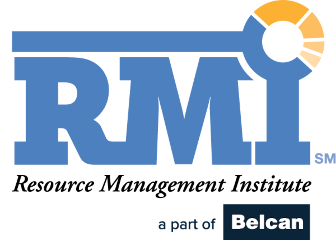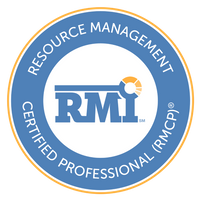Professional services resource management software is more important than ever to the success of services organizations. Everything from individual task assignments to payroll depends on a strong, accurate resource management solution. Additionally, resource management processes are continually evolving to keep up with modern demands, requiring professional services teams to adapt and embrace new trends and techniques.
Even if you’re using some of today’s best resource management technology, the processes by which you manage your teams can mean the difference between adequate company performance and becoming a leader in the field.
What are today’s top trending professional services resource management techniques? Knowing how today’s top performing organizations are using cutting edge software can help you stay up to date with what the market, your workforce, and your clients expect from you.
The Best Modern Resource Management Techniques
1. Cloud-Based Management
In a recent episode of Kantata’s podcast, “The Professional Services Pursuit,” guest Marc Lacroix, RTM Consulting Managing Partner, highlighted that cloud-based resource management has become the standard operating system for most modern resource management solutions today. Cloud-based services mean that team members can access projects, data, and tools whenever they need them and wherever they are. This can offer a huge variety of benefits for companies trying to become as efficient and lean as possible in an industry where distributed team members are becoming more common. Cloud-based resource management helps connect all team members quickly and without a dependency on hardware being delivered to a wide variety of locations. As a result, this approach means that companies will not only save money previously spent on hardware and servers that run critical systems, but that all resource and task data can be accessed and managed with ease, no matter the team, location, or project.
However, there are challenges that cloud-based management poses for companies that don’t properly adopt these new methods of working. With dispersed information and tasks so easy to create in the cloud, companies may be at risk of fragmenting their processes, with tasks, skills, and roles distributed too broadly across entire teams and even departments. When done right, resource managers can take advantage of the many different skills and capabilities of their teams.
2. Off-Premises Services Delivery
The world of professional services was centered around on-premises delivery for decades, with team members traveling to client locations ensuring that services and products were delivered to and properly adopted by customers. And while the details of services delivery change depending on the type of service and client, off-premises delivery has skyrocketed in recent years due to the combination of modern technological innovation and remote workforces.
Now, professional services organizations can provide work to customers around the world and from any country, without being limited by past ways of doing business. Of course, remote workers and customers who have never met in person will need strong resource managers and reliable software solutions to build relationships, ensure a high quality of service, and work to improve long-term adoption rates of the delivered product.
3. Skills-Based Hiring
A recent Forbes article highlighting 2023 resource trends drew attention to the shifting nature of hiring in professional services, with skills-based hiring up 63% in the past year, showing that today’s employers value resource experience over academic qualifications.
Taking on new employees that have relevant skills for the types of positions and tasks your company needs today, as well as for work that will continue to be valuable in the future of the company, means that organizations can hire the best fits for a growing business. In addition, these skills and relevant years of experience can be shaped to uniquely suit the business through continued work, training, and education, instead of hiring for the highest degree of education despite it not being an exact match for needed work.
4. Retainer and Credit-Based Work
Lacroix also highlighted in his podcast appearance that more and more professional services organizations are selling credits for work and retainer hours, which can be redeemed by clients at any time during the year.
During his guest appearance on “The Professional Services Pursuit,” Lacroix gave this advice to today’s professional services firms. “Should you rethink the way you package and structure your services to again, find a nice balance between being highly flexible to your client versus also not losing points of margin on your operation because it’s so heavy to try to manage.” Finding the right balance in how you make your services attractive to potential customers and also preventing a sudden rush of credit redemptions will be the key to profitability.
5. An Increased Focus on Upskilling
Today’s professional services organizations aren’t just trying to improve their utilization rates, they’re trying to improve the skills of their team members through career development and upskilling processes. However, according to Gartner research, 24% of companies’ leadership development approach does not prepare leaders for the future of work.
Upskilling can have a twofold positive impact on your organization. First, each team member will be able to provide a higher level of work for your business, resulting in better, more valuable projects that can be charged at a higher rate. Second, team members who feel valued in their career by a business have a higher likelihood of staying longer at that organization, resulting in better retention rates and the overall positive effects of decreasing unwanted turnover.
How Should You Respond To Resource Management Trends?
Trends can reshape an industry, but the time and financial toll of constantly changing how your business operates can have a net negative impact instead of a positive one when done too hastily, done incorrectly, or when not adopted for long enough to counterbalance the investment made in adoption.
Remember that when evaluating the latest trends in resource management, it’s important to determine how well your company will respond to changes in processes, technology, and management techniques. Is your company equipped to take on new software solutions? Do you have change management processes in place to ensure that new trends are adopted across your organization? In the end, it’s important to determine if you are ready for major changes in your company. Remember that you will need the appropriate amount of time to adapt to these trends and that, once adopted, you’ll be using them for the long term.

Charles Gustine is Brand Evangelist at Kantata. He is a product marketing specialist with a learning and development background, applying his experience to help customers find value in the SaaS software they purchase. After eight years of developing training solutions at SumTotal and Kantata, he is applying an educator’s sensibility to product and brand marketing. Charles leverages Kantata’s understanding of the challenges of professional services organizations to create market-leading thought leadership content.




